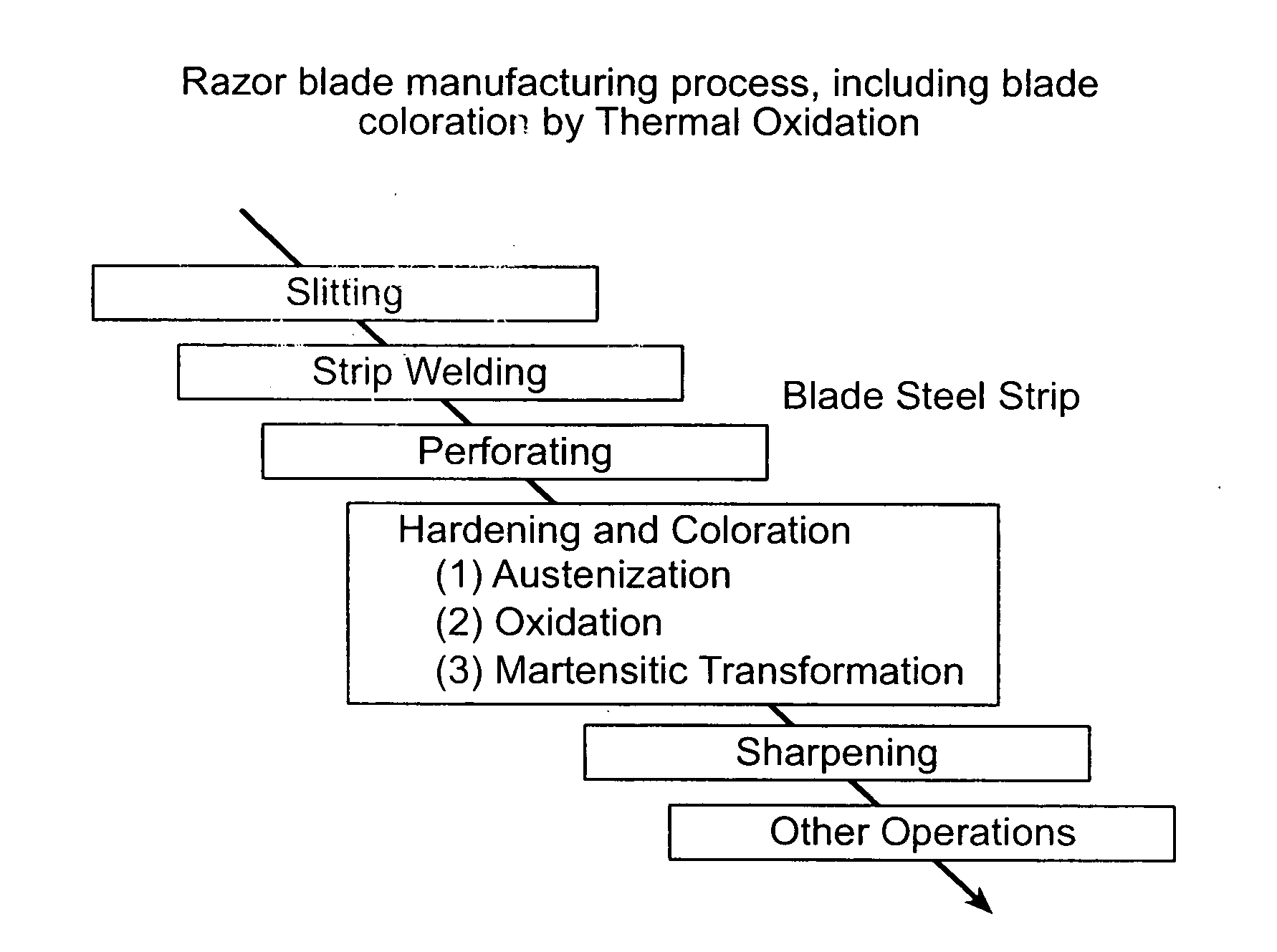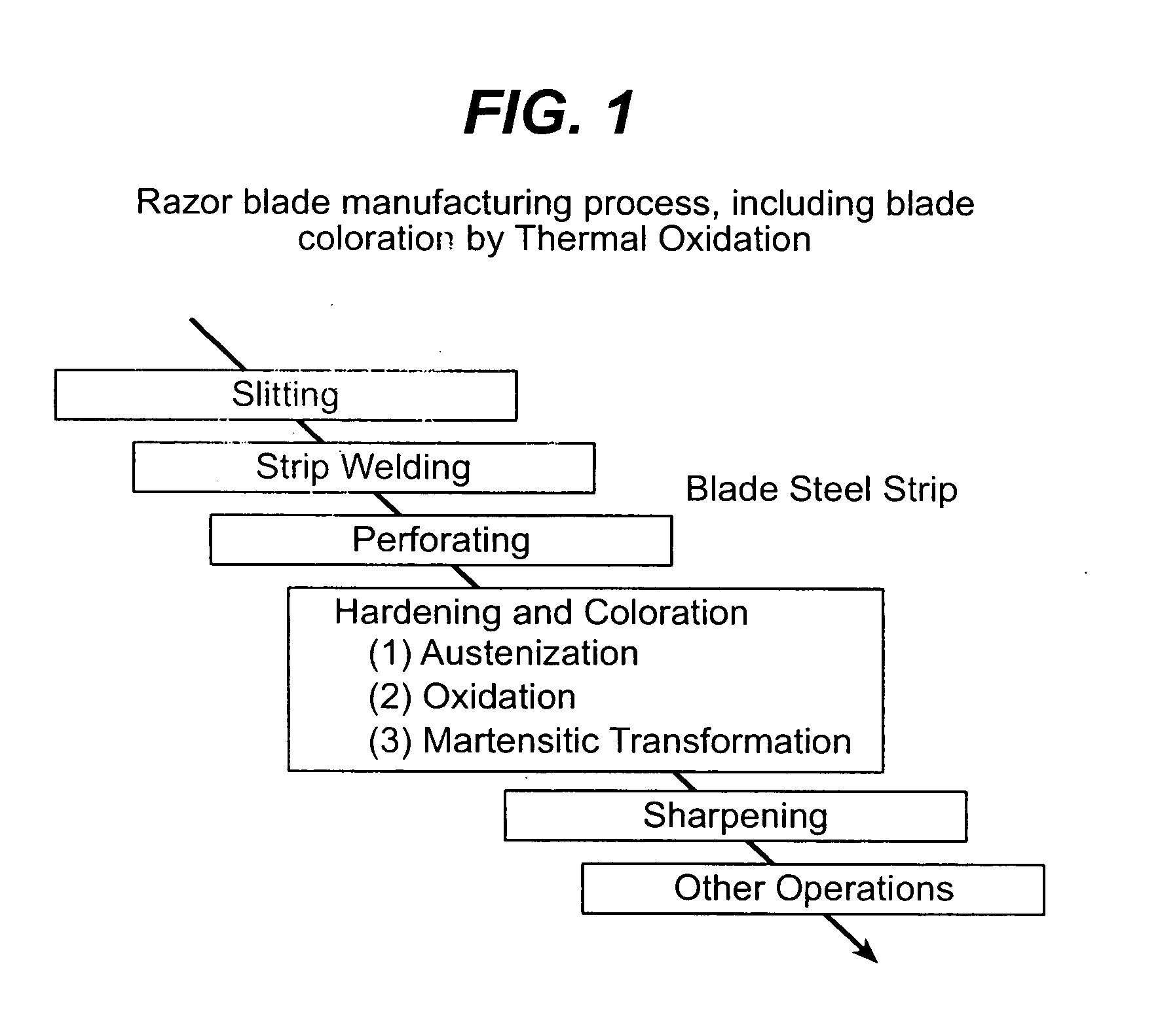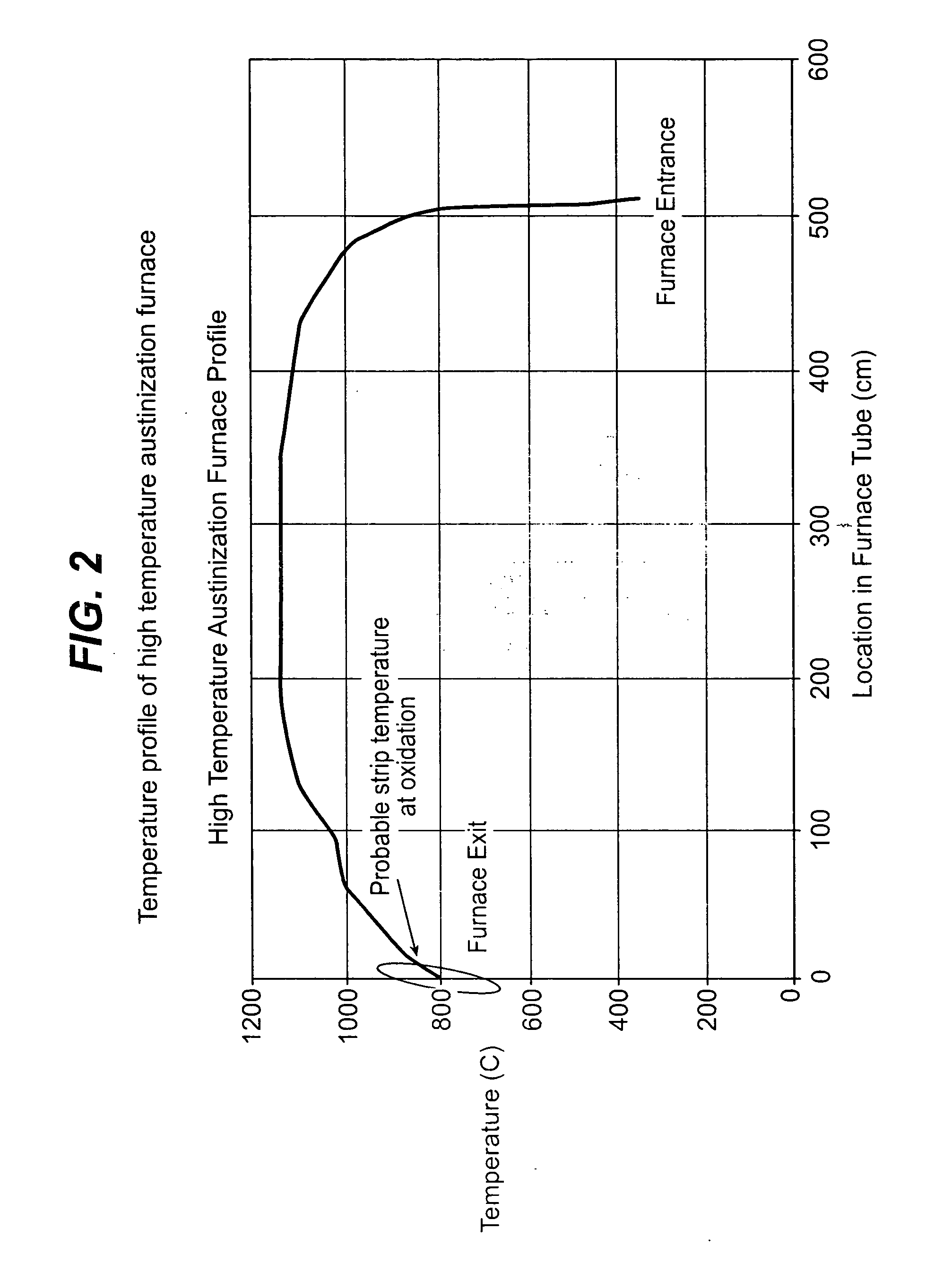Automated control of razor blade colorization
- Summary
- Abstract
- Description
- Claims
- Application Information
AI Technical Summary
Problems solved by technology
Method used
Image
Examples
Embodiment Construction
[0039] A suitable thermal oxide process for forming the colored oxide layer and manufacturing the razor blade is shown diagrammatically in FIG. 1. First, a sheet of blade steel is slit into strips. The strips are then welded together and then perforated for ease of handling during subsequent processing.
[0040] When the desired sequence of pre-hardening steps has been completed, the blade material is subjected to a hardening process, which includes austenization of the stainless steel. A typical temperature profile for the hardening process, which is conducted in a tunnel oven, is shown in FIG. 2. The material is quickly ramped up to a high temperature, e.g., approximately 1160° C., maintained at this temperature for a period of time, during which austenization of the stainless steel occurs, and then allowed to cool. A forming gas (e.g., including hydrogen and nitrogen) flows through the high temperature zone of the oven during austenization. The composition and flow rate of the form...
PUM
| Property | Measurement | Unit |
|---|---|---|
| Time | aaaaa | aaaaa |
| Flow rate | aaaaa | aaaaa |
| Color | aaaaa | aaaaa |
Abstract
Description
Claims
Application Information
 Login to View More
Login to View More - R&D Engineer
- R&D Manager
- IP Professional
- Industry Leading Data Capabilities
- Powerful AI technology
- Patent DNA Extraction
Browse by: Latest US Patents, China's latest patents, Technical Efficacy Thesaurus, Application Domain, Technology Topic, Popular Technical Reports.
© 2024 PatSnap. All rights reserved.Legal|Privacy policy|Modern Slavery Act Transparency Statement|Sitemap|About US| Contact US: help@patsnap.com










